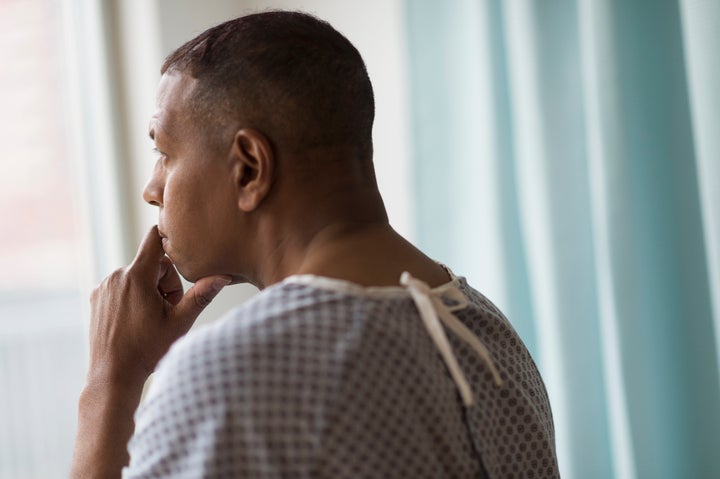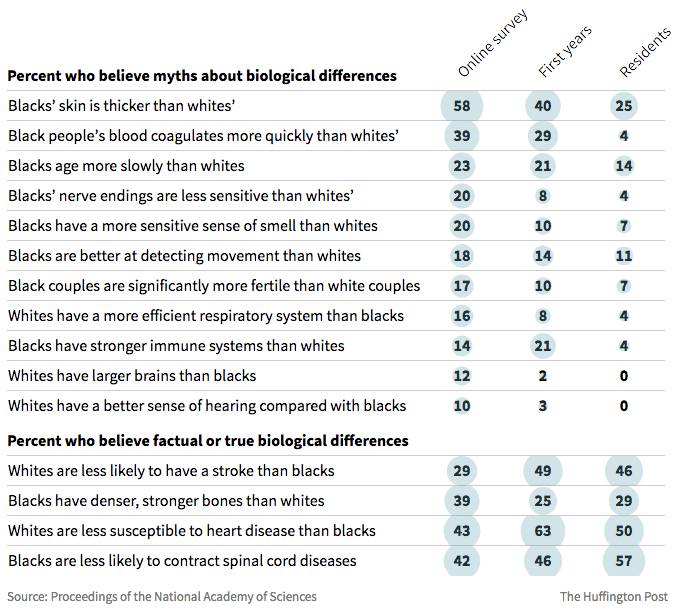
When it comes to emergency care, you may have a tough time if you're in pain and not a white man.
Previous research has shown that black and Hispanic patients who reported severe pain in the the ER were 22 percent less likely to receive pain medication than white patients who presented with the same complaints. And women suffer similar disparities: A 2008 study found that women wait an average of 16 minutes longer to receive pain relief for acute abdominal pain in the ER than men do.
Now a new study is shedding some light on this phenomenon. "We’ve been looking at racial bias and pain perception to try to understand why there are these large racial disparities in pain management," study author Kelly Hoffman, a psychology PhD candidate at the University of Virginia, told The Huffington Post.
The study, which was published in the Proceedings of the National Academy of Sciences in March, surveyed 222 white medical students and residents about biological differences between blacks and whites. A few of the survey items were true ("Whites are less likely to have a stroke than blacks," for example), but the majority of the items were false ("Whites have larger brains than blacks").
The results of the survey were distressing. Forty percent of first-year medical students and one in four residents answered that they thought black patients had thicker skin than white patients, and a full 50 percent of the respondents thought that at least one of the false facts was possibly, probably or definitely true.

Why are doctors-in-training so misinformed about basic biological concepts when it comes to race? While we can't know for sure Hoffman suggests that these entrenched misconceptions are simply a stronger force than medical education.
"Previous data would suggest that these are notions that are just so pervasive throughout our society and are so entrenched in our history that they are [beliefs] that people hold," she said.
In other words, it's not a few "bad apple" doctors and residents with racist tendencies -- it's sadly a more pervasive problem than that.
Racial disparities plague the health care system
This finding is particularly disheartening in light of rampant racial disparities that continue to plague the U.S. health care system. Blacks have worse health outcomes than whites for nearly every conceivable metric of health, including breast cancer mortality rates, HIV infection rates, and heart disease and stroke risk. Black Americans even get less sleep than white Americans. Black children are more likely to die in infancy, more likely to suffer from childhood obesity and more likely to have childhood asthma than their white counterparts. And, like their parents, if black children show up at the ER with appendicitis, which requires surgery, they're 80 percent less likely to receive opioids -- the most powerful pain medication -- during their treatment and recovery.
So what's a black patient to do? A study published in the American Journal of Gastroenterology in March found that black patients were 20 percent less likely to die or have major complications if they received treatment at a racially diverse hospital, as opposed to a hospital with less racial diversity.
“Our underlying hypothesis is that hospitals and providers that treat more minority patients have higher levels of cultural competency,” study author Dr. Philip Okafor, a researcher at the Mayo Clinic, told Reuters.
Being understood by your doctor is a key component of receiving good medical care. In addition to increasing the cultural competency of doctors, as Okafor mentions, increased diversity among doctors would help, too.
"In an ideal world, the race of the patient or physician wouldn’t matter; we would all treat each other strictly as individuals," Dr. Damon Tweedy, a psychiatrist at Duke University Medical, wrote in the New York Times last year. "But we’re quite a ways from reaching that exalted goal. For now, we have to attack the problem of racial health disparities from as many angles as possible. Black doctors are an important part of this mission."